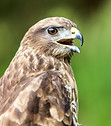HOOKY IN HARMONY WITH NATURE
Ecosystems

It’s ridiculous to think that we can destroy so many of the Earth’s plants, animals, and ecosystems and not think it can happen to us. All of this will come back to bite us, and sooner than we think.
Joel Sartore, National Geographic Photgrapher & speaker.
Every factor in an ecosystem depends on every other factor, either directly or indirectly. A change in the temperature of an ecosystem will often affect what plants will grow there. Animals that depend on those plants for food and shelter will have to adapt to the changes, move to another ecosystem, or perish.
Changes to ecosystems
Ecosystems are very sensitive to change. The living and non-living components of the ecosystem can be altered by either natural factors or human management.
Changes to the ecosystem caused by natural factors include:
-
drought
-
flood
-
fire
-
disease
This illustration shows how our local animals are linked in a food web. Each animal or insect depends on others in the ecosystem to survive.






How do humans change ecosystems?
On a small scale, a tree may be cut down to let more sunlight into a garden. The tree can no longer provide birds and insects, together with worms and organisms that live among the tree's roots, a place to live.
On a large scale, natural vegetation is removed and could be replaced with crops for food, grazing for animals, or to provide room for the houses in which people live. This has altered the food webs and nutrient and energy cycles of ecosystems across the Earth.
We have many examples of different ecosystems in our area, including fresh water ponds, such as the one on the Darcy Dalton Way.

The freshwater pond ecosystem consists of the following:
-
Pond bottom - there is very little oxygen or light at the bottom of the pond. Decomposers and scavengers live here where they feed on dead material, eg water worms and rat-tailed maggots.
-
Mid water - fish are the main predators here. Food is found on the pond bottom or the pond surface. Animals here breathe through their skin or gills, eg stickleback fish, water fleas and dragonfly nymphs.
-
Pond surface - animals here breathe through their gills, skin or lungs. There is plenty of oxygen and light here. Animals found here include ducks, water boatmen, midge larvae and tadpoles.
-
Pond margin - plants provide a sheltered habitat for insects and smalls animals such as frogs. There is lots of light and oxygen so plants such as marsh marigold thrive.
-
Above the pond surface - birds such as kingfishers and insects like dragonflies are common here.
The pond ecosystem can be changed by humans in the following ways:
The nutrient levels of the water can be altered if fertilisers are leached into the water, resulting in eutrophication.
Introducing more fish (fish stocking).
Altering the drainage of the land which may influence the amount of water in the pond.

Photo courtesy of David McGill

